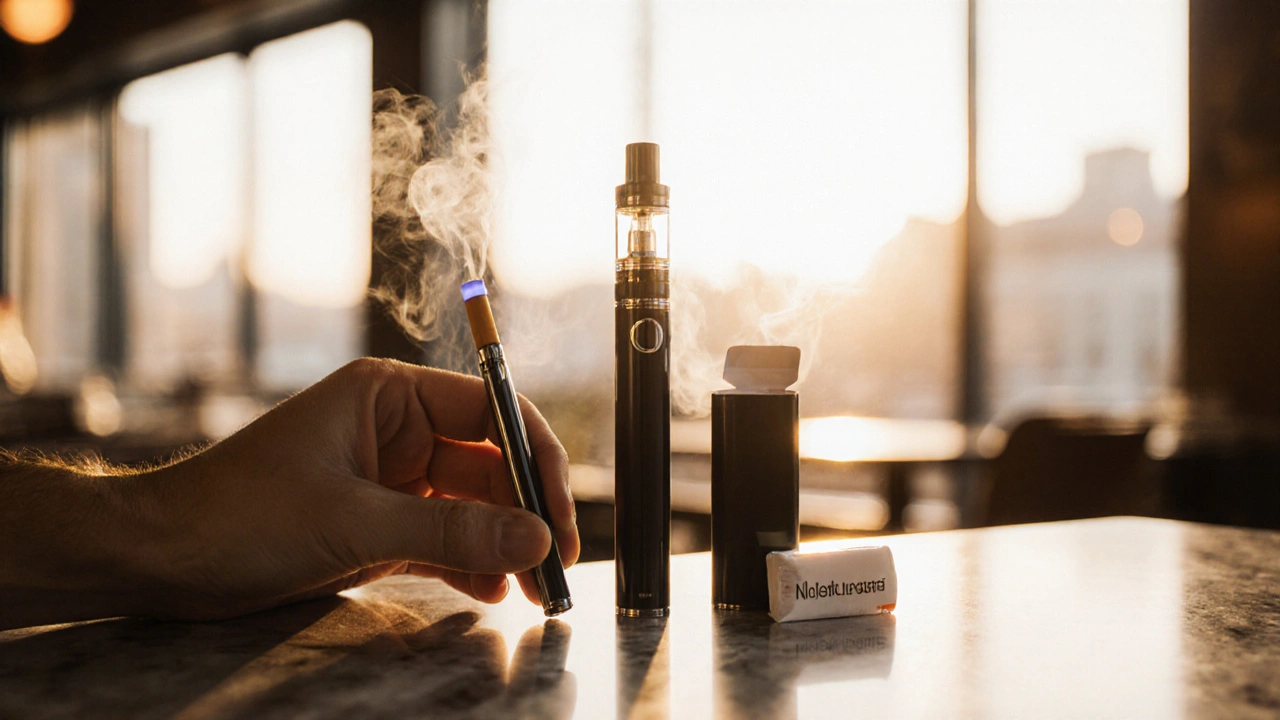Vaping Alternatives: Safer Ways to Quit Nicotine Without Smoking
When people try to quit vaping, they often hit a wall: the craving doesn’t vanish just because the device is gone. vaping alternatives, practical substitutes that help manage nicotine withdrawal without the risks of e-cigarettes. Also known as nicotine replacement therapies, these tools are designed to reduce cravings while avoiding the lung irritation and unknown chemicals in vape juice. The goal isn’t just to swap one habit for another—it’s to break the cycle of dependence safely and sustainably.
Many of the most effective nicotine replacement, methods that deliver controlled doses of nicotine to ease withdrawal. Also known as NRT, it includes patches, gum, lozenges, and nasal sprays. These aren’t magic bullets, but they work better than going cold turkey—especially when paired with simple behavioral changes like chewing mint gum, drinking water when a craving hits, or walking for five minutes. Studies show people who use NRT are twice as likely to quit long-term compared to those who don’t. And unlike vaping, these options don’t expose you to ultrafine particles, flavoring chemicals, or the risk of battery explosions.
But quitting isn’t just about replacing nicotine—it’s about replacing the ritual. Vaping often ties into daily routines: after coffee, during breaks, while scrolling. That’s where smoking cessation, structured approaches to stop using tobacco or nicotine products. Also known as tobacco cessation, it strategies come in. Counseling, apps that track cravings, and even support groups help rewire the brain’s association between stress, boredom, and puffing. You don’t need a therapist to start—you just need to recognize the triggers and have a plan ready. For example, if you used to vape after meals, try brushing your teeth right after eating instead. Small shifts add up.
Some people turn to herbal teas, acupuncture, or CBD oils as vaping alternatives. But not all of these are backed by evidence. What works best? Proven methods: NRT, behavioral support, and sometimes prescription meds like varenicline or bupropion—both of which are used in quit vaping, the process of stopping electronic nicotine delivery systems with medical or behavioral support. Also known as e-cigarette cessation, it programs. These aren’t for everyone, but they’re options worth discussing with a doctor, especially if you’ve tried other methods without success.
What you’ll find below isn’t a list of gimmicks or untested trends. It’s a collection of real, practical guides from people who’ve been there—how to manage withdrawal without gaining weight, how to handle social pressure, why some nicotine patches work better than others, and what to do when cravings feel unbearable. No fluff. No hype. Just clear, usable advice that matches what doctors and researchers actually recommend.

Future of Smoking: Emerging Trends & Alternatives
- Oct, 12 2025
- 10
Explore the latest smoking trends, emerging nicotine alternatives, health impacts and regulatory changes shaping the future of smoking.
Categories
- Health and Wellness (51)
- Medicine (36)
- Health and Medicine (23)
- Women's Health (9)
- Mental Health (8)
- Men's Health (7)
- Beauty and Wellness (4)
- Health Information (4)
Archives
- December 2025 (12)
- November 2025 (25)
- October 2025 (27)
- September 2025 (14)
- August 2025 (3)
- July 2025 (2)
- June 2025 (2)
- May 2025 (3)
- April 2025 (4)
- March 2025 (4)
- February 2025 (2)
- January 2025 (3)
- online pharmacy
- medication safety
- dietary supplement
- health benefits
- dietary supplements
- prevention
- fertility
- online pharmacy Australia
- treatment
- treatment options
- benefits
- connection
- drug interaction
- drug interactions
- pregnancy
- Cancer Treatment
- depression medication
- antidepressants
- quality of life
- anxiety treatment
